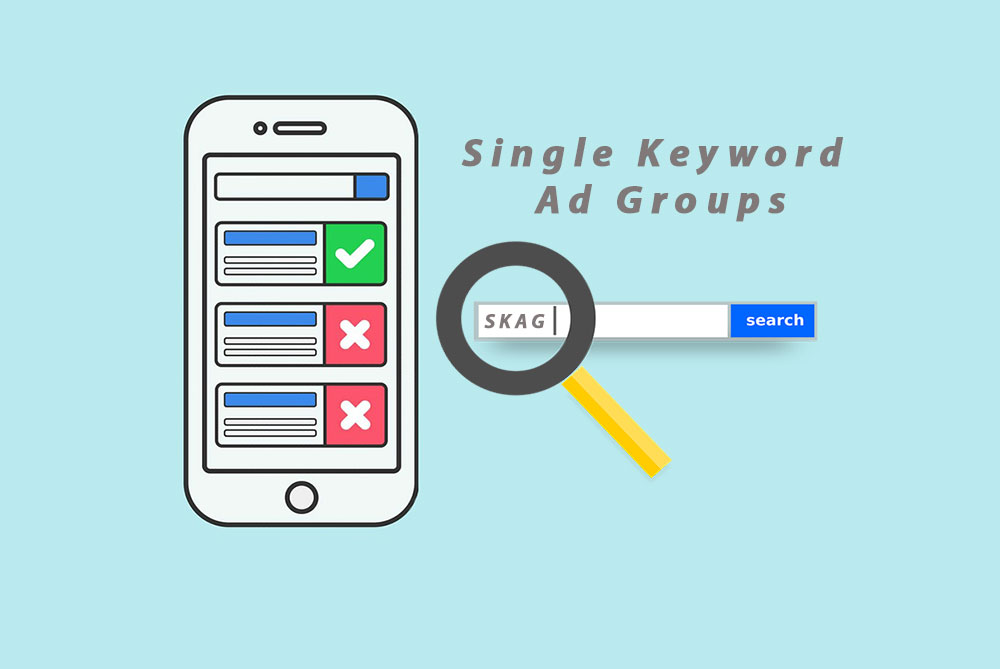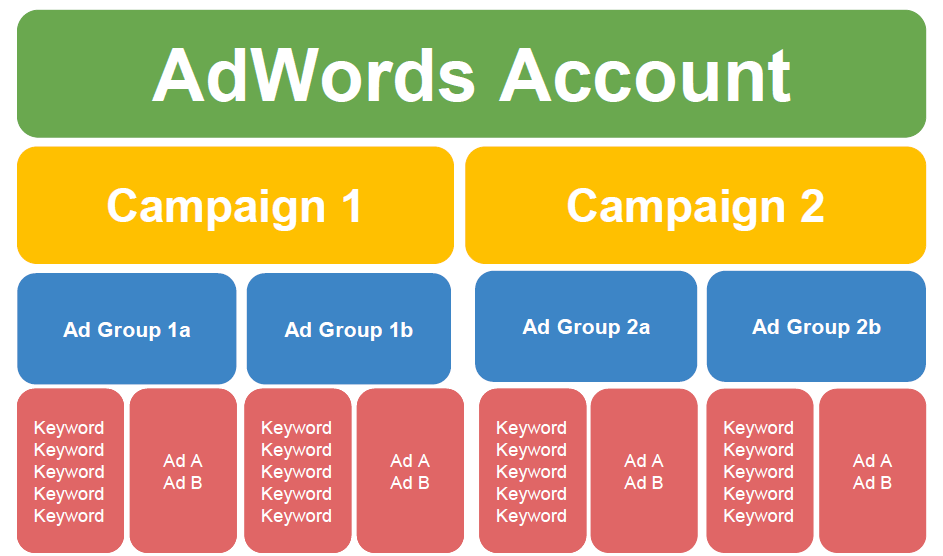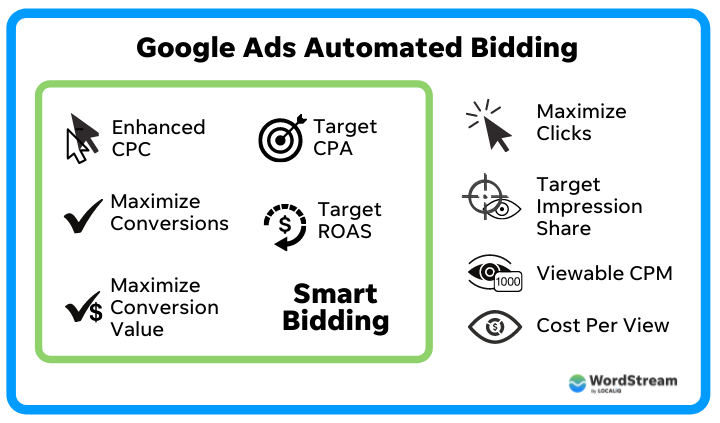The SKAG (Single Keyword Ad Group) structure has been adhered to slavishly by PPC managers for a number of years. The lack of search phrases, loose match types, and Google’s proposal to give broad match another shot, however, makes me believe that there should be additional structures that could be effective. We conducted research and questioned PPC managers to learn more about the most often used structures. They mentioned the following:
1. SKAGs (Single Keyword Ad Groups) with an Alpha/Beta Structure
You have two campaigns in this Google Ads structure with identical keywords, but with various match types—typically exact match (EM) and broad match modified (BMM). The EM campaign serves as the primary campaign, while the BMM campaign is utilized to collect additional search words that are later transferred to the EM campaign as SKAG. The most frequent campaign structure is the union of SKAGs and Alpha/Beta structures.

2. Multi-match Type Ad Groups with a Single Keyword
The Alpha/Beta structure is not used in this Google Ads structure. Instead, you create just one campaign. How broad you want to go will determine how many match types there are. For each ad group, some advertisers only use broad matches and exact matches. The combination entirely depends on how assured the advertiser is. It is simpler to use smart bidding and to optimize with more data at the campaign and ad group level.
3. Wide Match Campaign with Intelligent Bidding
I would advise adding this campaign structure to the current setup rather than beginning with it. Because of how many search phrases it can capture, the broad match has long been shunned by PPC managers. However, Google has stated that they want advertisers to give wide matches one more shot. They contend that by using broad match and smart bidding, you may use auction-time signals to determine the appropriate bid for each inquiry.
4. Ad Groups with themes
The main factor for marketers to choose this Google Ads campaign structure is loose close match variants. It has made the SKAG structure more challenging to manage. You can divide the themes in this structure however finely you wish. However, the theme must be supported by the ad group’s keywords.
5. Campaigns Divided by Age Using Intelligent Bidding
Aside from delving into too much depth, several advertisers have stated that they divide their advertisements by age. I talked about this with a PPC manager who carries out this. Customer lifetime value is a crucial indicator for his company’s sector of the subscription economy. The simplest way to manage this, they determined, is to divide campaigns by age group because they are sending Google the conversion value. Keep in mind that they also split the campaign because smart bidding is being used, and smart bidding prevents the usage of bid modifications. This is, in my opinion, an extremely sophisticated and intricate Google Ads campaign structure, and the account needs to have enough data to support such a split. However, this might be a fantastic approach to maximize your ad budget if you notice that age groups for your company have varied LTV or attrition rates.
6. With smart bidding, campaigns are divided based on keyword performance.
Determining the performance indicator on which the grouping will be based is the first stage in this process. It is possible to organize depending on CPC, conversion rates, ROAS, and cost per acquisition (CPA). Because they have varied CPC levels or conversion rates, most ad groups or keywords that use smart bidding will perform better than average and worse than average. The target will be hit by the bid approach, nevertheless. To ensure that the overperforming keyword does not make up for the underperforming one, some advertisers employ this Google Ads campaign structure to maximize the performance of the keywords. Comparable to dividing campaigns by age is this strategy. The least preferred strategy is this one, nevertheless.
When should I use the optimum Google Ads structure?
I must end by stating that there isn’t a single effective structure that outperforms them all. Each arrangement has benefits and drawbacks.No certain structure performs better in one industry than another. But you can attempt choosing a structure by responding to these inquiries:
- Given my current traffic, which campaign structure should I use?
- What structure will work best with my volume of traffic to use smart bidding?

This may make it a little clearer to you which structure to use first. Testing out several structures is the best way to determine which one is the greatest, though.





